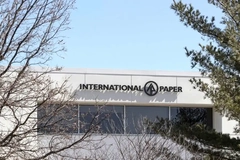Defra report reveals miniscule increase in UK packaging recycling rates over a decade

28 Nov 2022 --- A report from Defra reveals the amount of packaging waste recycled has barely shifted since 2012 in the UK, only increasing from 61% to 63% over the past ten years.
However, recycling for most material categories has risen significantly over this period, with aluminum, steel, glass and plastic all seeing substantially increased recycling rates. Reduced recycling levels of paper and cardboard, which represent the most common material category for packaging, counteract the rise.
However, recycling for most material categories has risen significantly over this period, with aluminum, steel, glass and plastic all seeing substantially increased recycling rates. Reduced recycling levels of paper and cardboard, which represent the most common material category for packaging, counteract the rise.
Aluminum rose from 38% to 75%, steel from 56% to 76%, glass from 68% to 74%, plastic from 25% to 44%, wood from 51% to 44% and paper and card fell from 86% to 71%, generating a total of 61% to 63%, between 2012 and 2021.
The Resources and Waste Strategy, Monitoring Progress, November 2022 report found that of the 22.6 million metric tons of household waste collected in 2020, only 9.7 million metric tons – making up 2.33% – were recycled, composted or prepared for reuse.
Defra shows that packaging recycling rates in England have barely shifted since 2012. Low waste decrease
The report states that the total amount of collected household waste has increased by 2% since 2010, while the mass of waste recycled, composted or prepared for reuse has risen by 7% over the same period. Similarly, local authority-collected waste recycled has mainly been flat for several years.
From 2010 to 2018, recycling and other recovery only increased by about 2% in the respective eight years, from 50.7% to 52.8%.
England generated 187.3 million metric tons of waste in 2018, 11.7% more than in 2010 – 167.6 million metric tons – and 1.4% more than in 2016. This rise in waste is what the packaging industry has been fighting to counteract over many years.
In 2017, an estimated 53% of residual waste consisted of readily recyclable materials, with only 8% being completely unavoidable. The report writes that this number represents a significant opportunity to decrease further the amount of residual waste produced in England.
Landfill waste
The amount of waste sent to landfills fell from 26 million metric tons in 2010 to 13 million metric tons in 2020, driven mainly through incineration, having taken its place with an increase from 6 to16 million metric tons in the amount of material burned. The amount of waste disposed of by landfill or incineration rose from 26 million metric tons in 2015 to 29 million metric tons in 2020.
In 2020, 4.9 million metric tons of biodegradable municipal waste (BMW) were sent to landfill in England, 52.5% less than in 2010. The 2020 figure is just 16.9% of the 1995 baseline of BMW generation. The report recommends a pathway within its Resources and Waste Strategy, exploring policies to work toward eliminating biodegradable waste to be landfilled by 2030.  UK’s report of less waste sent to landfills is due to it being sent to be incinerated, Defra reports.
UK’s report of less waste sent to landfills is due to it being sent to be incinerated, Defra reports.
Furthermore, 3.7 million metric tons of hazardous waste were generated in 2018, an increase of 24% from 3 million metric tons in 2010. Commercial and industrial activities are consistently the largest source of hazardous waste.
Packaging demand
The material footprint, or raw material consumption, is the amount of primary raw materials extracted globally due to England's residents’ final demand for goods and services.
After peaking in 2003, the raw material consumption footprint (excluding fossil fuels) fell to its lowest level across the available series in 2010 before rising again in 2015 – the pattern has been inconsistent ever since. When excluding fossil fuels, the total footprint was around a fifth (26%) lower in 2019 than in 2003.
In 2020, the waste management sector in England generated an estimated 15.8 million metric tons of CO2 through greenhouse gas emissions, 73.7% less than the equivalent figure in 1990, 60.1% and slightly lower than in 2019.
By Sabine Waldeck











